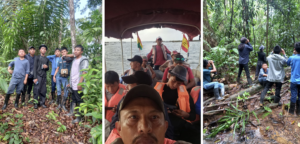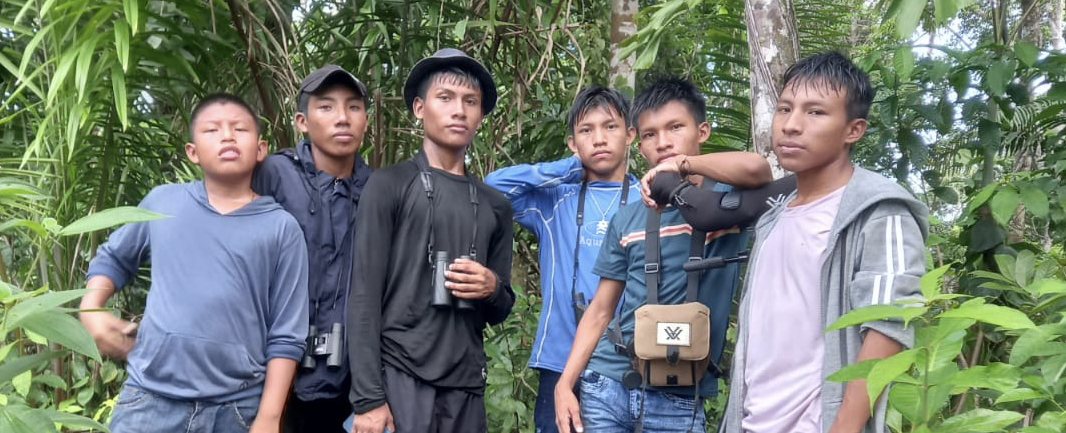Tropics are the most biodiverse ecosystem in the world. The Neotropics, the tropical areas located in the American continent, encompass several developing countries, nations which have not experienced a substantial level of industrialization relative to other countries. However, in Panama, a developing Neotropical country, growth and industrialization are just around the corner, which can be reflected for example by the recent improvement of the Llano-Cartí highway, which passes through the Guna Yala mountain range and connects the towns of El Llano, located near Chepo in Panamá Province, and at the north end, Cartí, located on the Caribbean coast in the Guna Yala Comarca. When driving along this road, it’s impossible not to be amazed by the dense tropical forests on both sides. Moreover, Guna Yala is one of the most touristic areas in Panama, given that it holds an archipelago of around 365 islands – 51 inhabited – that are fringed by incredible paradisiacal white-sand beaches. The area is managed by the local indigenous Guna communities, and the road seeks to improve transportation and facilitate the touristic development of this outstanding place. However, as we know, development can become a threat to tropical biodiversity, and the better access to Guna Yala has started to change the use of land in the surroundings of the road. Local communities are now felling parts of the forest to practice agriculture, one of the main economic activities that sustain Guna Yala, coupled with tourism.
Moreover, to promote professional training of young students, the small middle and high school Saila Olonibiquiña, located on the island Cartí Sugdup in the Guna Yala archipelago, and one of the few educational opportunities that exist within the archipelago, offers a degree focused on “sun and beach tourism”. This small school receives students from 19 different islands, who travel 15–20 minutes every day by boat. However, this “sun and beach tourism” market has already started to fill, and young people are being left with few alternative job opportunities. Nonetheless, our Canopy Family guide Igua Jiménez, a Guna Yala local, instead of seeing the tourism and current road situation as an obstacle, sees it as an opportunity: the opportunity to train young future local nature and birding guides that can work inside the forest. In his case, becoming a professional guide changed his life: it took him to visit and study in different countries, and gave him an incredible job whereby he can support his family in harmony with nature, by showing visitors the incredible Panamanian biodiversity.
That is why Igua started a small education project in which, during his free days when he goes back to visit his family in Guna Yala every 2 weeks, he uses one day to take eight 15- to 17-year-old students birding. While Igua travels 3 to 4 hours to Guna Yala from Panama City, the students, all from the Saila Olonibiquiña school, travel from the islands Cartí Yadup and Cartí Tupile to the mainland, and they all go to bird in the forests of Nusagandi Reserve, which belongs to the Narganá Protected Wilderness Area, in the surroundings of the Llano-Cartí highway. This recent project started thanks to the donation of a few binoculars, and it is sustained with other small donations mainly covering transportation. Canopy Family helped with obtaining the donated binoculars and allowing the use of Canopy Family’s spotting scope, which helps enhance the birding experience and learning of the participants.
Igua strongly believes that if these students can have basic knowledge of hiking, nature, and birds, they can improve their local economy by performing this activity in the future, while also protecting the surrounding nature of the place where they live. Recently, birding companies have started to see the potential of Nusagandi as a birding hotspot, and who better than a local guide to help you find unique birds. The Sapayoa (Sapayoa aenigma), the near-threatened Speckled or Spiny-faced Antshrike (Xenornis setifrons), the Green Manakin (Cryptopipo holochlora), and the Chocó Manakin (Cryptopipo litae) are just some of the extraordinary and uncommon bird species that can be spotted in the area. The project is planned to last one whole year until the students graduate, and it can be improved with more 8×42 binoculars, since there are not enough binoculars for all participants. Therefore, if you have binoculars in good condition that you would like to donate, please contact us. Moreover, an idea for your next trip to Panama could be to upgrade to a new pair of Swarovski Optik binoculars available in our lodges and consider donating yours to this project!
We are proud of Igua for this initiative and we hope to see more projects like this in the future, where birds provide unique conservation and educational opportunities within the tropics!
 Our Canopy Family guide Igua Jiménez and his birding students from the Saila Olonibiquiña School, birdwatching in Nusagandi, Guna Yala, Panama.
Our Canopy Family guide Igua Jiménez and his birding students from the Saila Olonibiquiña School, birdwatching in Nusagandi, Guna Yala, Panama.

